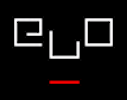Your cart is currently empty!
Other News
-
Immediate Residential Fellowship for a Scholar Impacted by Katrina
PLEASE LINK AND DISTRIBUTE WIDELY. The Maryland Institute for Technology in the Humanities (MITH) at the University of Maryland, College Park is pleased to be able to offer an immediate… Read more.
-
Shandy Hall Residencies
Laurence Sterne (1713-68) wrote The Life and Opinions of Tristam Shandyin Shandy Hall, Coxwold, York, in the 18th Century. The innovative nonlinear novel is often cited by contemporary new media… Read more.
·
-
Thom Swiss Seminar at University of Queensland
ELO President Thom Swiss will be at the University of Queensland’s St. Lucia campus on Tuesday, August 9th, to give a talk on “New Media Literature and Art: A Writer’s… Read more.
·
-
CFP/New Media Texts: Reading (and Writing) New Media
Editors Jim Kalmbach and Cheryl Ball invite submissions of essays and new media texts for a collection entitled Reading (and Writing) New Media. The anthology seeks to interrogate the act… Read more.
·
-
Mainframe Experimentalism Anthology
Douglas Kahn and Hannah Higgins are putting together an interdisciplinary collection on “the encounter of artists, musicians, poets and writers, and filmmakers working within avant-garde, experimental, and artistically innovative traditions… Read more.
-
July Topic on “Writing and the Digital Life”
The July discussion topic for Sue Thomas’ online community project, “Writing and the Digital Life,” is “the synthesis of language and visual art in the context of the digital environment.”… Read more.
-
Interview with Sue Thomas on trAce
trAce Online Writing Centre has published Randy Adams’ new interview with Sue Thomas, a longtime director of trAce and now professor of New Media at the De Montfort University School… Read more.
-
Hear Past Banff New Media Institute Summits on Radio90’s “Archive Hour”
Radio90, an internet pirate radio station, has begun broadcasting audio recordings of past Banff New Media Institute Summits on its “Archive Hour”. Visit the Radio90 website for the broadcast schedule. Read more.
-
Yucef Merhi’s “Poetic Engineering” at the Orange County Museum of Art
New media artist Yucef Merhi’s “Poetic Engineering” project is on view at the Orange County Museum of Art’s Orange Lounge through August 28, 2005. Merhi’s digital texts explore the bond… Read more.
·
-
Interview with Turbulence.org’s Co-Director Helen Thorington
Read Domenico Quaranta’s recent interview with Helen Thorington, a founding organizer and current co-director of Turbulence.org, at Turbulence. Also forthcoming in Cluster #5. Thorington discusses the origin and development of… Read more.
·
